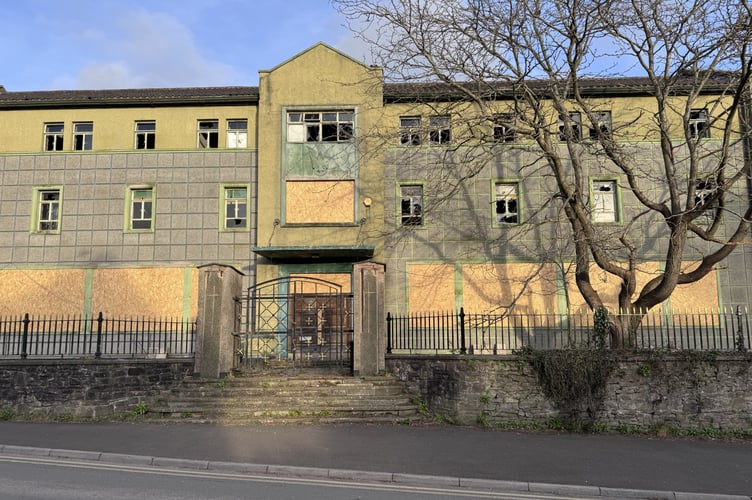SITTING just outside of Abergavenny’s town centre, Mulberry House is a building with many windows, all of which are broken.
It’s a scathing testimony to how this iconic structure and former convent has sat empty and unoccupied for decades. It paints an extremely bleak picture.

Vandalism and neglect have turned what was once a hive of activity and a talking point of the town into a shattered shell of its former glory.
Buildings aren’t just haunted by ghosts. They’re haunted by the memories of better times as well.
Yet despite the peeling paint, the boarded-up windows, the padlocked gates, and the slow march into redundancy and ruin, the building still holds itself with a defiant and battered dignity.
The structure and presence of Mulberry House are infused with an air of mystery that no amount of indifference or casual stone-throwing can dispel.

Who lives in a house like this?
The answer is no one!
But who could live in a house like this?
At a time when many people in the local area are crying out for homes and even more are crying out for ones they can afford, Mulberry House sits as a reminder carved in stone and mortar of a world that no longer makes all that much sense.
Many Abergavenny residents have walked past the old building and wondered why it can’t be revamped and restored for some new and utilitarian purpose.
Even more, have contacted the Chronicle to demand answers.
We don’t have any. We can only ask the questions.

What we do know is that many of you have fond memories of the time when Mulberry House was part of the Old Convent run by the Order of St Michael. Alongside the nuns, boarders who attended the nearby school in Park Crescent would stay there.
Yet the only permanent thing is change and when the school closed and the nuns moved out in the 1950s, the late 18th century Grade II-listed building and grounds passed into the hands of the Inner London Education Authority (ILEA).
For 30 years it was a field study centre where inner-city children could get a taste of a different sort of life.

Following the abolition of the ILEA in 1994 it was passed to the Royal Borough of Kensington and Chelsea and was renamed The Ty’r Morwydd Environmental Studies Centre. In 2008 part of the building officially became Mulberry House Hostel and opened its doors for global backpackers.
Yet in March 2012, the demand for school field trips and other excursions to Abergavenny died a death.
The cost of running and maintaining the build was proving too much for the board of trustees who did not own the building. The decision was made to shut up shop.
The council put Mulberry House on the market and as often happens with rundown properties desperately in need of a lick of paint and some TLC, it stagnated.
However, in 2014 the restorative rays of a new dawn put the building back in the spotlight. It had been purchased by a property developer who wanted to convert the house into 19 apartments.
Planning was approved, and then, nothing much happened.
MCC has been asked if they have any knowledge of future plans or developments regarding the building, but for now, much like the last two decades, the future of Mulberry House remains a mystery.




